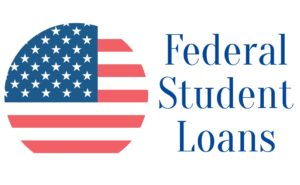College-aged students face a lot of important decisions at a young age. From applying to schools to actually picking one, to choosing a college major, and beyond. Students, along with their parents, must then decide how to pay for a college education. Some families may have created a 529 College Savings Plan, but even then, there are a lot of expenses left to cover. This naturally leads families to consider taking out student loans. Federal student loans are a popular option among many families, so let’s learn about them.
Federal Student Loans Fact Sheet
With everything else on your plate, you probably don’t have time to scour the internet for the latest facts and figures about student loan borrowing. To help you make an informed decision, we have compiled all the facts about federal student loans in one place.
Breaking Down Federal Student Loans:
- Students need to reapply for their federal loans every year. You will never have a cosigner on a federal loan.
- Federal loans come with fixed interest rates. The current average is 4.45% on Direct Loans and 7% on Direct PLUS Loans.
- There are three types of federal loans:
- Stafford loans, which are capped at $31,000
- Perkins loans, which are capped at $27,500
- PLUS loans; Parent PLUS or Grad Plus loans.
- A subsidized Federal Loan is based on the student’s financial need when applying through Free Application for Federal Student Aid (FAFSA).
- An unsubsidized Federal Loan is when students begin acquiring interest beginning on the date of their first loan disbursement. Although students will accrue interest, they are not required to pay the interest until graduation and the amount acquired is added to the principle loan amount.
- There are a number of options for federal student loan relief, as well as options for defaulted student loans. Federal loans include repayment benefits such as income-driven repayment plans and fixed interest rates, and your loan may be eligible for forgiveness.
- You do not have to start paying your loans until you graduate, leave school, or your enrollment status drops below half-time. Most loans offer a six-month grace period before payment is due. You can postpone your loan into a deferment or forbearance.
- You do not need a credit check to take out a federal loan (unless applying for a PLUS loan).
- Congress sets the amount a student can borrow, so the loan may not cover the entire cost of tuition.
If you’re struggling to pay off debt, ACCC can help. Schedule a free credit counseling session with us today.






